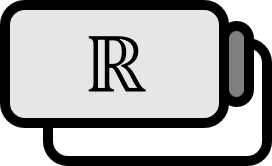Three Axioms of Analysis: 1 Field Axioms
Axioms1
Let’s accept the following properties for real numbers $a,b,c \in \mathbb{R}$ and operations $+,\cdot$.
(A1) Closure under addition: $a+b \in \mathbb{R}$
(A2) Associative law for addition: $(a+b) + c = a + (b+c)$
(A3) Commutative law for addition: $ a+ b= b + a$
(A4) Identity element for addition: For every real number $a$, there exists a unique $0$ satisfying $a+0=0+a=a$.
(A5) Inverse element for addition: For every real number $a$, there exists a unique $(-a)$ satisfying $a + (-a) = (-a) + a = 0$.
(M1) Closure under multiplication: $a\cdot b \in \mathbb{R}$
(M2) Associative law for multiplication: $(a\cdot b) \cdot c = a \cdot (b\cdot c)$
(M3) Commutative law for multiplication: $a\cdot b= b \cdot a$
(M4) Identity element for multiplication: For every real number $a$, there exists a unique $1$ satisfying $a\cdot 1=1\cdot a=a$.
(M5) Inverse element for multiplication: For every real number $a$, excluding $0$, there exists a unique ${a^{-1}}$ satisfying $a \cdot a^{-1} = a^{-1} \cdot a = 1$.
(D) Distributive law: $a \cdot (b + c) = a \cdot b + a \cdot c$
Explanation
Introduction to analysis fundamentally deals with the functions in the set of real numbers $\mathbb{R}$. And one of the most perplexing processes in this study of analysis is studying such seemingly obvious facts. Until now, what was considered obvious is delved into with ‘rigor’, or as students might feel, unnecessary depth. Students who have always been thirsty for rigor will find it interesting, whereas others may find it challenging.
Real numbers have been gradually expanded in the compulsory education system, naturally and intuitively accepted as a concept. Thus, it becomes quite tedious to argue if they are closed under operations like addition and multiplication, especially when these 11 properties are taken for granted so much that we hardly pay attention to them until we hurriedly memorize them before an exam, which might add to a mathematician’s sense of doubt.
However, overcoming all this is part of the trial for learning greater subjects. There’s no need to memorize them thoroughly either. After a while, when you learn abstract algebra, you’ll find yourself talking fluently about these 11 properties without needing to memorize them. And further on, you’ll understand how these properties are not so obvious yet very useful. For instance, the following obvious fact surprisingly requires proof.
Theorem
Multiplying any real number by $0$ results in $0$.
Proof
Let’s say $a \in \mathbb{R}$. Since $0 \in \mathbb{R}$, then $0 + 0= 0$,
$$ a \cdot 0 = a \cdot [ 0 + 0 ] $$
By the (D) Distributive Law,
$$ a \cdot 0 = a \cdot 0 + a \cdot 0 $$
Since $a \cdot 0 \in \mathbb{R}$, the (A5) Inverse element for addition exists,
$$ a \cdot 0 + \left[ -(a \cdot 0) \right] = a \cdot 0 + a \cdot 0 + \left[ -(a \cdot 0) \right] $$
Then $a \cdot 0 + \left[ -(a \cdot 0) \right] = 0$,
$$ 0 = a \cdot 0 $$
■
See Also
William R. Wade, An Introduction to Analysis (4th Edition, 2010), p5-6 ↩︎
